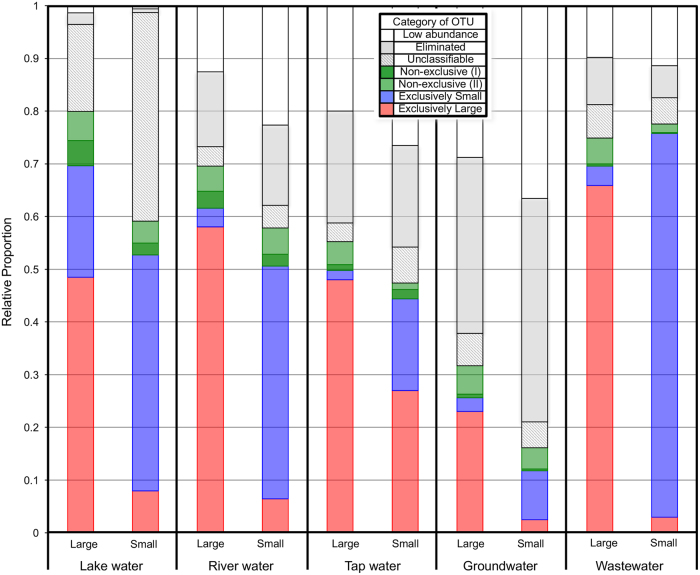Fig. 7.
Relative abundances of OTUs classified with the described exclusivity criteria (exclusively small [blue], exclusively large [red], non-exclusive [green], and unclassifiable. eliminated and rare OTUs[white/gray]) in each size group of each ecosystem. For each ecosystem (Groundwater, Wastewater, River water, Lake water, and Tap water), the total relative abundance for all filters in a particular size (small, large bacteria) is shown. Large bacteria is the HNA-dominated community collected on a 0.4 µm filter, and Small bacteria is the LNA-dominated community in the 0.4 µm filtrate, collected on a 0.2 µm filter. Non-exclusive OTUs are further divided into whether they occur in duplicate (I) or not (II). OTUs not meeting initial cutoffs are marked as “rare”, and not meeting secondary cutoffs are marked as “eliminated”. Overlap (e.g., exclusively large OTUs in the small bacteria community) is due to leniency that OTUs may occur on both filters (0.2 and 0.4 µm filters) of a filter-pair, so long as it does not appear exlcusviely on the opposite fitler anywhere (e.g., non-exclusive OTU)

